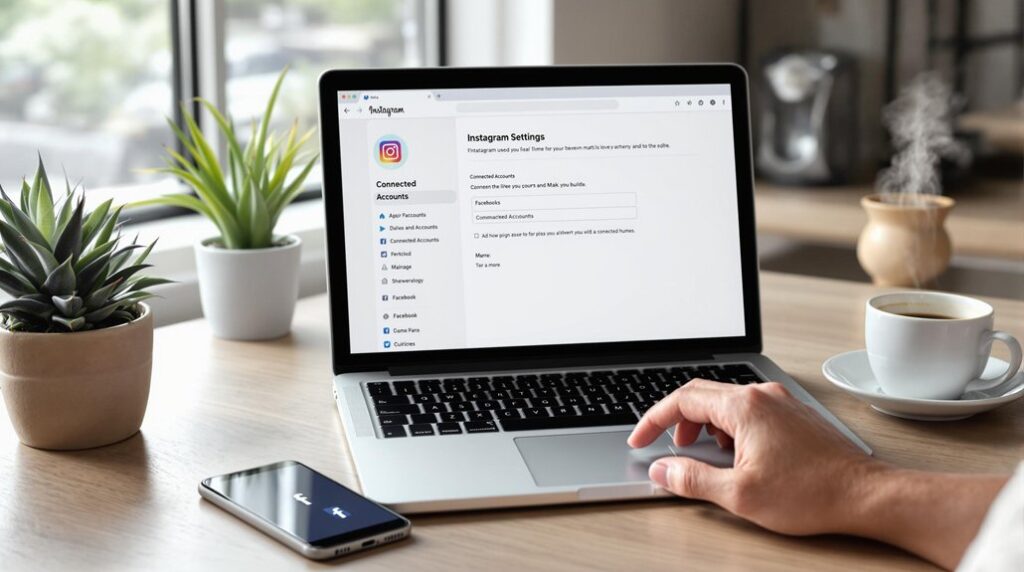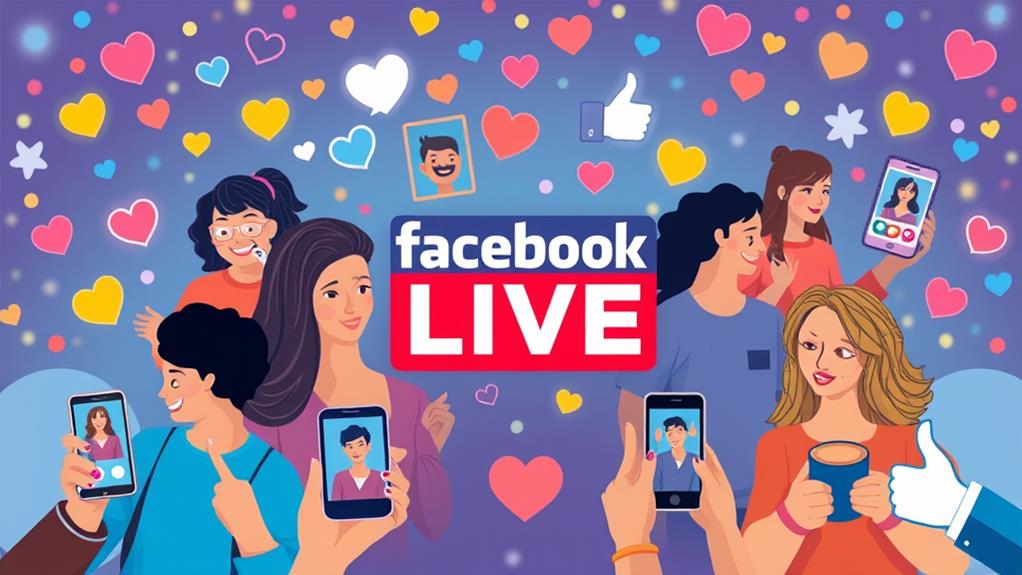Facebook polls are a highly effective tool for engaging your audience, with a 52.6% higher interaction rate compared to static content. They foster deeper connections, offer real-time feedback, and can greatly boost brand loyalty and visibility. By crafting clear, concise questions and using visual elements, you can enhance participation rates while promoting polls across various platforms broadens their reach. Analyzing poll responses can reveal valuable audience insights, enabling data-driven adjustments to marketing strategies. To explore how to maximize the benefits of Facebook polls further, you can continue learning more about their powerful impact.
Key Takeaways
- Facebook polls enhance engagement by 52.6% compared to static content, boosting visibility and interaction.
- Real-time feedback from polls allows for swift adjustments to marketing strategies.
- Polls foster a sense of community, strengthening brand loyalty and connection with users.
- Utilizing visual elements in polls increases participation and engagement rates.
- Promoting polls across multiple platforms broadens exposure and attracts more responses.
Importance of Audience Engagement
Understanding the importance of audience engagement is pivotal for any digital marketing strategy. Audience engagement directly correlates with enhanced customer retention rates and brand loyalty, which are critical metrics for long-term business success.
Engaged audiences are more likely to convert, leading to higher conversion rates and increased revenue. One effective means of fostering a robust audience connection is through interactive content, such as polls. These engagement strategies not only make users feel valued but also actively involve them in the brand's narrative.
For example, responding within the first hour to comments and queries can greatly boost engagement levels, reinforcing the brand's commitment to its audience.
Data reveals that engaged audiences contribute greatly to improved brand awareness and search engine optimization (SEO). By increasing the time spent on site and reducing bounce rates, businesses can enhance their online visibility.
Furthermore, a high level of engagement often translates into a positive brand image and reputation, as users who feel valued and connected are more likely to promote the brand organically.
Benefits of Using Facebook Polls
Why should businesses consider incorporating Facebook polls into their digital marketing strategy? Facebook polls greatly enhance engagement rates, with interactive content driving 52.6% higher engagement compared to static content. Different poll types, such as multiple-choice or binary options, allow marketers to tailor their approach based on audience demographics, guaranteeing a more personalized interaction.
Utilizing polls provides real-time feedback, enabling marketers to swiftly adjust strategies and content according to audience preferences. This adaptability not only optimizes marketing efforts but also guarantees content remains relevant and engaging. High engagement levels from polls boost reach and visibility, as increased likes, comments, and shares expand the post's audience, potentially drawing in new followers.
Additionally, using Facebook's massive user base of over 2.8 billion monthly active users can greatly broaden the scope of your poll's reach.
Additionally, by valuing audience feedback through polls, brands foster a sense of community and strengthen brand loyalty. Engaged users are more likely to become loyal customers, appreciating the brand's commitment to listening and responding to their needs.
Incorporating polls into a content strategy can guide future content creation, improving overall content relevance based on valuable insights gathered from user responses. Therefore, Facebook polls are an indispensable tool for any business aiming to enhance engagement, visibility, and customer loyalty through data-driven, audience-focused strategies.
Crafting Effective Polls
Creating effective polls is fundamental to maximizing audience engagement and deriving valuable insights. To achieve this, poll question design should be clear and concise, as simpler polls generally lead to higher participation rates. Avoiding ambiguity and using straightforward language can prevent confusion and keep the audience interested.
It is also beneficial to craft engaging posts that resonate with your audience's interests and pain points. Incorporating visual appeal is another essential factor. Utilizing images or GIFs can make your polls more engaging and visually stimulating for users. This not only captures attention but also makes the polling experience more enjoyable, encouraging more responses.
Timing is also essential. Polls that remain open for too long might lose their relevance, while shorter polls can prompt quicker responses. An ideal duration guarantees that your poll remains timely and engaging.
A strong call to action is indispensable for boosting participation. Encouraging users to share their opinions and disseminate the poll further enhances reach and effectiveness.
Lastly, aligning your poll topics with audience interests is critical for gathering valuable insights. When the poll content resonates with your audience, the data collected can greatly guide your future content strategies.
Promoting Your Polls
Promoting your polls effectively is vital for maximizing engagement and guaranteeing that your efforts yield meaningful insights. To achieve this, deploy a variety of poll promotion strategies to maximize visibility.
Begin by promoting your polls across multiple platforms, including Facebook groups, stories, and other social media channels. This multi-channel approach guarantees broader exposure and increased participation rates.
Utilize compelling headlines and high-quality visuals to attract attention and boost engagement. Data shows that these elements are essential for immediate impact.
Utilizing Facebook Ads is another powerful method to target specific demographics, thereby boosting the reach and relevance of your polls. Data shows that targeted ads can greatly enhance visibility among your desired audience segments.
Creating urgency through time-sensitive promotions can also drive quicker responses and heightened engagement. People are more likely to participate promptly when they know the opportunity is fleeting.
Incentivizing users with rewards for participating in and sharing the poll is another effective strategy. This not only enhances overall reach but also encourages organic engagement.
Lastly, engage with your audience by posting reminders and follow-up comments about the poll. This reinforces its importance and keeps it top-of-mind, further encouraging participation.
Employing these data-driven and audience-focused strategies will certainly maximize the effectiveness of your Facebook polls.
Analyzing Poll Feedback
Maximizing engagement through effective poll promotion is only part of the equation; the next step involves meticulously analyzing the feedback to extract actionable insights.
Response categorization is vital, enabling marketers to break down responses by demographics and user behaviors. This granularity reveals different audience segments' preferences, providing a clearer picture of who the audience is and what they value. One method to enhance your analysis is to analyze audience feedback to refine your strategy and improve resonance.
Additionally, experiment with diverse content formats to capture broader engagement. Trend identification within poll responses is essential for highlighting audience preferences. By recognizing patterns and commonalities, businesses can align their offerings and messaging with what resonates most with their audience. This data-driven approach informs decision-making processes and helps in refining strategies that enhance user satisfaction.
Feedback prioritization is another significant component. Not all feedback will align with business objectives, so focusing on actionable insights that impact the majority of the audience guarantees that efforts are directed towards meaningful improvements.
Engagement evaluation through monitoring response rates and engagement levels over time provides a feedback loop for marketers. This ongoing analysis helps assess the effectiveness of past campaigns and refine future strategies.
Ultimately, leveraging insights from poll analysis results in more resonant and effective polls, maintaining content relevance and audience interest.
Tools for Poll Creation
Frequently, marketers seek innovative tools to enhance their poll creation strategies on social media platforms. Facebook offers several built-in poll creation tools that streamline the process, allowing users to generate and share polls directly on their pages, groups, and events. This feature is vital for boosting audience engagement and obtaining user feedback in real time. Utilizing these tools can also impact engagement metrics, such as likes and comments, by encouraging more interaction.
Additionally, Facebook Stories includes poll stickers, which are highly effective in capturing quick feedback in a casual and visually appealing manner. This method is particularly beneficial for reaching a broader audience and gaining immediate insights into their preferences.
For those requiring more advanced polling capabilities, third-party tools such as SurveyMonkey and Typeform provide extensive survey options. These external platforms enable marketers to craft detailed questions and perform in-depth analysis, going beyond the basic functionalities of Facebook's native tools.
Integrating Facebook Insights with these poll creation tools allows for tracking essential engagement metrics. This data-driven approach helps marketers understand audience preferences and refine their content strategies accordingly.
Moreover, leveraging Facebook Ads can greatly expand the reach of your polls, encouraging more extensive participation and interaction. By adopting these user feedback methods, marketers can continuously enhance their engagement strategies and drive meaningful connections with their audience.
Best Practices for Consistency
Establishing a regular posting schedule for Facebook polls, such as weekly or monthly, greatly boosts audience engagement by fostering habitual interaction and feedback.
Data shows that consistent polling not only increases user participation but also enhances loyalty and connection.
Regular Posting Schedule
Implementing a regular posting schedule for Facebook polls can greatly enhance audience engagement and anticipation, leading to a 52.6% higher interaction rate compared to irregular postings. By maintaining consistent poll frequency, brands can better align their engagement patterns with user behavior, thereby maximizing visibility and interaction.
Scheduling polls at ideal times based on audience analytics is essential. This strategic approach guarantees that polls are posted when users are most active, considerably boosting response rates.
Additionally, consistency in posting helps in cultivating a sense of community and loyalty among followers, as regular interaction fosters deeper connections.
- Improved Brand Visibility: Frequent interactions through polls often result in increased likes, shares, and comments, boosting overall reach.
- Enhanced Engagement Tracking: A regular schedule allows for better tracking of engagement trends over time, enabling more effective adjustments to future polls based on audience feedback.
- Maintained Audience Interest: Regularly incorporating polls into your content strategy keeps the audience interested and involved, promoting a sense of connection and community.
Audience Engagement Techniques
Maintaining a regular posting schedule for Facebook polls is only one part of the equation; effectively engaging your audience requires an all-inclusive approach that incorporates best practices for consistency.
Consistently incorporating polls into your content strategy can lead to ongoing audience engagement and community building, with 81% of marketers finding interactive content more effective than static options.
To fully leverage Facebook polls, it's crucial to design questions that resonate with your audience personas. Utilizing a mix of open and closed-ended questions helps capture diverse audience insights, providing a thorough understanding of preferences and behaviors.
Promoting these polls across multiple platforms can increase visibility and participation rates, leveraging the power of social sharing to maximize reach and engagement.
Regularly analyzing engagement metrics from poll feedback allows marketers to identify trends and patterns, which can inform future content strategies and guarantee alignment with audience interests.
Additionally, acknowledging and communicating any changes made based on poll responses fosters trust and encourages continued participation, ultimately reinforcing brand loyalty.
Frequently Asked Questions
What Is the Power of Interactive Content?
Interactive content greatly enhances interactive engagement, leading to 52.6% higher interaction rates and providing real-time audience feedback. This data-driven approach allows marketers to tailor strategies effectively, fostering deeper connections and boosting brand loyalty through personalized experiences.
How Do I Engage My Audience on Facebook?
To engage your audience on Facebook, utilize polling strategies that align with audience preferences. Design simple, relevant questions and enhance them with visuals. Promote polls across platforms and share results to demonstrate the value of their feedback.
What Type of Content Is Most Engaging on Facebook?
The most engaging content on Facebook includes visual storytelling and user-generated content. These formats captivate audiences and foster higher interaction rates, with polls and questions encouraging active participation, thereby driving increased visibility and stronger brand connections.
Why Should You Engage With Your Audience on Social Media?
Engaging with your audience on social media strengthens audience connection and enhances brand loyalty, leading to a 52.6% higher engagement rate. This increased interaction improves customer retention, drives conversions, and provides valuable insights for tailored content strategies.
Conclusion
The strategic utilization of Facebook polls greatly enhances audience engagement by providing interactive, real-time feedback mechanisms. Employing data-driven methodologies to craft and promote these polls guarantees the acquisition of valuable insights while maintaining user interest. Analyzing poll outcomes and leveraging advanced tools for poll creation further optimizes content strategies. Consistency in deploying polls as part of a broader engagement plan fosters sustained interaction, reflecting a trend-aware approach to digital audience management.




